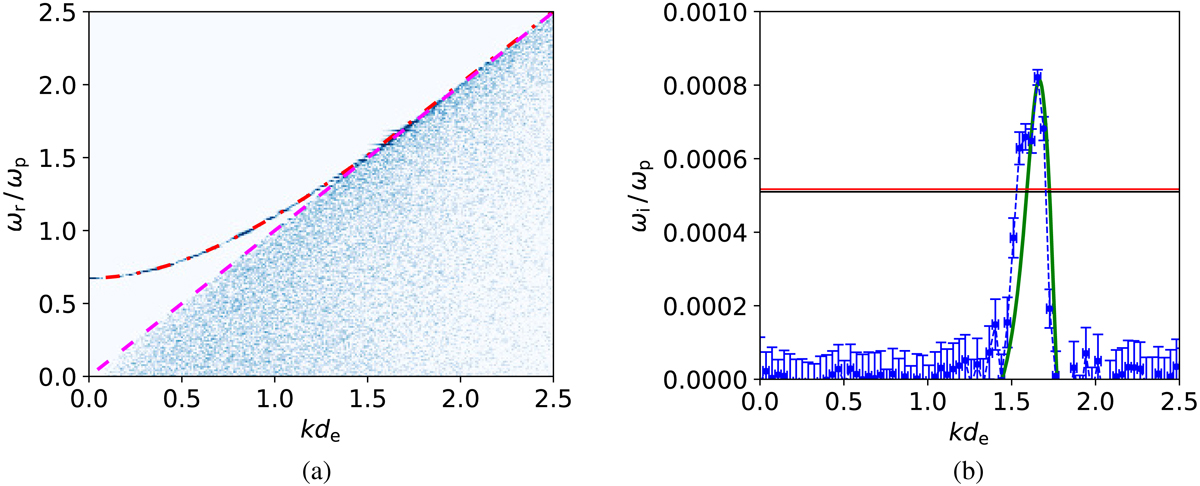Fig. 1.

Comparison between a solution obtained by linear theory with the one from simulation for ρ0 = ρ1 = 1, γb = 26, rn = 10−3. Panel a: dispersion diagram showing the real part of the frequency ωr as a function of the wavevector k. The background in blue colour scale represents the power spectral density obtained from the simulation electric field E(x, t). The discontinuous lines represent solutions of the linear dispersion relation Eq. (1): the superluminal L-mode branch (dash-dotted red line) and the subluminal branch (dashed magenta line). Panel b: imaginary part of the frequency ωi (corresponding to the growth rates) as a function of the wavenumber k for the subluminal branch. The green line shows the solution of the linear dispersion relation, and the dashed blue lines with error bars indicate the simulation results. The horizontal lines represent the values of the integrated growth rates obtained from the dispersion relation (red line) and from the simulation (black line).
Current usage metrics show cumulative count of Article Views (full-text article views including HTML views, PDF and ePub downloads, according to the available data) and Abstracts Views on Vision4Press platform.
Data correspond to usage on the plateform after 2015. The current usage metrics is available 48-96 hours after online publication and is updated daily on week days.
Initial download of the metrics may take a while.


